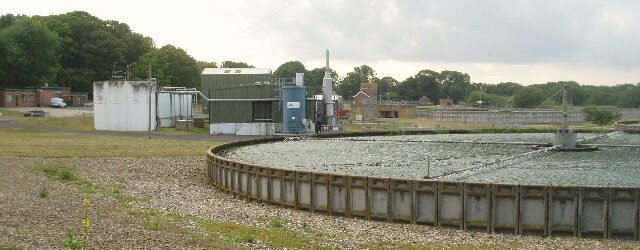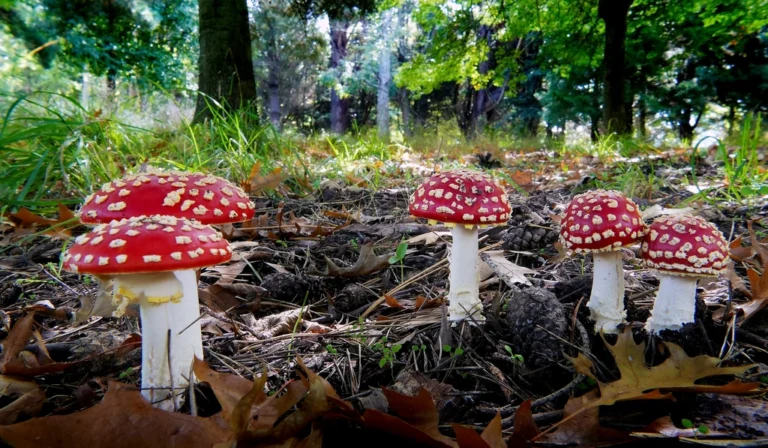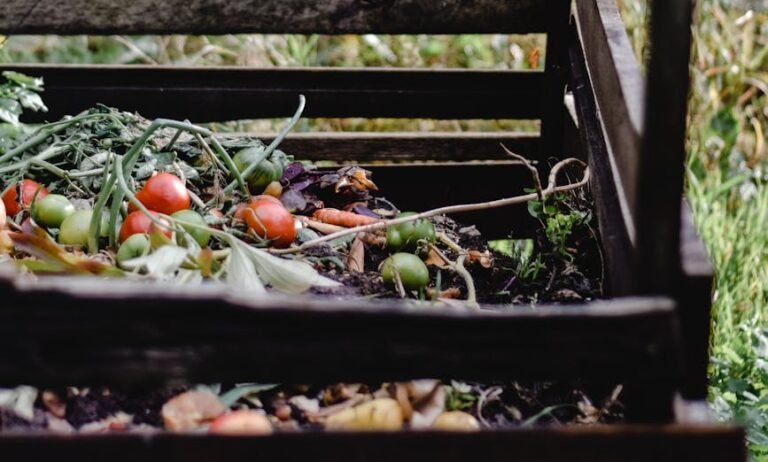How the sewage-industrial complex created a $2 trillion illusion, and why the solution is literally under our noses
The Great Deception: What They Don’t Want You to Know
Picture this: You walk into a garden center. You spend $8-30 on a bag of “premium potting soil.” You take it home with anticipation and plant your seeds… and watch them fail to sprout. Sound familiar? You’re not alone. Across America, gardeners are discovering a surprising truth. The soil they’re purchasing should be the foundation of life. However, it is actually lifeless, chemically-treated waste. This soil kills more plants than it grows.
But this isn’t just about gardening frustration. This is about a systemic deception so vast, so normalized, that most people participate in it daily without ever questioning the circular madness they’re trapped within.
What if I told you that the same waste you flush down your toilet every morning ends up on the vegetables you eat for dinner? What if the “treated” water coming out of your tap contains pharmaceutical residues from thousands of strangers? What if the fertilizer industry has convinced you to buy back your own waste, but only after they’ve poisoned it beyond recognition?
Welcome to the sewage-industrial complex. A $2 trillion system that has disconnected us so completely from natural cycles that we’ve forgotten the most basic truth of human existence. Everything is connected!
The Circular Insanity We Call “Normal”
Let’s trace the journey of a simple act. One that every living human performs daily. You eat breakfast, your body processes it, and you flush the results down the toilet. That waste travels through miles of pipes to a treatment facility. Where, as I discovered during my tours of these operations, something remarkable happens. They take one of nature’s most valuable resources and systematically destroy it.
First, they skim and filter, removing the obvious solids. Then comes the illusion of biological treatment. A trickle-down system with some living organisms that bears no resemblance to nature’s sophisticated composting processes. But here’s where the system reveals its true nature: after this minimal processing, they add chemicals. Lots of chemicals. Not to enhance the natural processes, but to kill them entirely.
Every pharmaceutical that passed through human bodies: antibiotics, hormones, antidepressants, chemotherapy drugs, remains in the water. Every food additive, every industrial chemical we’ve absorbed, every toxin we’ve processed: it’s all still there. But now it’s joined by chlorine, fluoride, and other chemical cocktails designed to create the illusion of purity by eliminating all life.
This chemically-sterilized water gets pumped back into your tap as “potable water.” You drink it, cook with it, shower in it. Meanwhile, those concentrated solids that are now a toxic soup of everyone’s waste mixed with industrial chemicals, get sold to large commercial farms as fertilizer.
Think about the profound insanity of this system. We take one of nature’s most perfect recycling mechanisms, and poison it beyond recognition. Then buy it back at premium prices while remaining terrified of the natural process we’ve abandoned.

The Soil Crisis Nobody Talks About
While we’ve been busy creating this circular nightmare, something catastrophic has been happening beneath our feet. America is facing a soil crisis of unprecedented proportions. The very foundation of our food system, topsoil, is disappearing at rates that should terrify anyone who understands the connection between soil health and human survival.
But here’s the systems-thinking revelation: this isn’t separate from our sewage problem. These are interconnected crises born from the same fundamental disconnection from natural cycles.
Every time you purchase that bag of lifeless potting soil, you’re participating in a system that has forgotten how soil is actually created. Real soil, the kind that produces vibrant, nutritious plants, is the result of complex biological processes involving decomposition, microbial activity, and the cycling of organic matter. It’s a living ecosystem, not a sterile growing medium.
The bagged soil you’re buying is often the end result of factory farming operations. Such as, concentrated animal feeding operations. CAFOs are where animals live in unnatural conditions, producing waste that’s collected, minimally processed, and packaged for consumer purchase. This isn’t the natural manure that has fertilized fields for millennia. This is waste from animals fed unnatural diets, pumped with antibiotics, and raised in conditions that would make any natural ecosystem recoil.
When your seeds fail to sprout in this “premium” soil, your plants are trying to tell you something. This isn’t soil at all. It’s the dehydrated remains of a broken system.
The Fear-Based Psychology That Keeps Us Trapped
Here’s where the psychology gets fascinating. Mention the idea of using human waste as fertilizer. A practice that sustained civilizations for thousands of years, and watch people recoil in horror. “Disgusting!” they cry. “Disease-ridden! Dangerous!”
Yet these same people are unknowingly consuming vegetables grown with everyone else’s waste. Now contaminated with pharmaceutical residues and industrial chemicals. They’re drinking water that contains microscopic particles of that same waste. Plus whatever chemical cocktail was added to mask its presence. They’re spreading feedlot waste on their gardens while remaining terrified of the natural composting processes their great-grandparents used without question.
This fear-based thinking reveals something profound about how disconnected we’ve become from natural systems. We’ve been conditioned to fear the very processes that created the soil beneath our feet and sustained human civilization for millennia. Meanwhile, we embrace industrial processes that are demonstrably more dangerous, more toxic, and more disconnected from the cycles of life.
The psychological manipulation is brilliant in its simplicity. Make people afraid of natural processes while normalizing industrial ones. Create a problem (disconnect from natural cycles), and then sell them the solution (expensive, chemical-dependent alternatives). All while keeping them too afraid to remember what their ancestors knew instinctively.
The Regenerative Revolution: Systems Solutions for a Broken Cycle
But here’s where systems thinking reveals its transformative power: once you understand the interconnections, the solutions become obvious. What if, instead of participating in this circular madness, we remembered how to work with natural cycles instead of against them?
The solution isn’t just about human waste, it’s about understanding that every organic input can become part of a regenerative system. It’s about recognizing that the “waste” problem and the “soil crisis” are actually the same problem viewed from different angles.
Simple Systems: The Basic Approach
The simplest solution requires nothing more than a bucket, some carbon-rich materials (wood shavings, leaves, sawdust), and an understanding of basic composting ratios. One scoop of carbon material per deposit creates the proper balance for decomposition without odor or pest issues. Add a toilet seat for comfort. Then, create ventilation to manage gases. Viola, you have a system that costs virtually nothing while producing valuable compost.
This isn’t about returning to primitive conditions. It’s about applying systems wisdom to create elegant solutions. The bucket system can be as sophisticated as you want. It can have enclosed chambers with proper ventilation, easy-change containers, integrated into bathroom design that rivals any conventional setup.
Intermediate Systems: Scaling Up the Solution
For those ready to invest more significantly, composting toilets represent the next level of sophistication. These systems use natural processes to break down waste while managing moisture, temperature, and airflow to optimize decomposition. Modern composting toilets can handle family-sized waste streams while producing finished compost in 1-2 years.
The beauty of these systems lies in their recognition of natural processes. Instead of fighting decomposition with chemicals, they optimize it. Instead of wasting water, they conserve it. Instead of creating pollution, they create fertility.
Advanced Systems: Permaculture Integration
The most sophisticated approach integrates human waste management into broader permaculture systems. Greywater from sinks and showers waters food forests. Blackwater gets processed through constructed wetlands. Or, integrated into food forest systems where tree crops (not vegetables) benefit from the fertility while creating buffer zones.
These systems recognize the ultimate truth: in nature, there is no waste. Everything is input for something else. Every output becomes input. Every problem becomes part of the solution.

Working Within (and Around) the System
The regulatory landscape presents real challenges, but systems thinking reveals multiple pathways forward:
Legal Workarounds
- Many jurisdictions allow composting toilets in “auxiliary structures” like workshops or cabins
- Greywater systems are increasingly legal and can reduce overall waste stream
- Food forest systems often fly under regulatory radar while accomplishing waste processing goals
- Mobile or temporary installations may avoid permanent structure regulations
Regulatory Change Strategies
The key is demonstrating superior outcomes. When your system produces healthier soil, uses less water, creates no pollution, and costs less money, logical people pay attention. Start with pilot projects, document results, build community support, then approach regulators with data rather than ideology.
Community Solutions
Individual action scales into community transformation. Neighborhood composting programs, community gardens using regenerative practices, and local food forest projects create momentum for broader systemic change.
The Economics of Regeneration
The financial case for regenerative systems is overwhelming:
Current System Costs:
- Average American spends $400+ annually on fertilizers and soil amendments
- Municipal sewage treatment costs taxpayers billions annually
- Healthcare costs from exposure to agricultural chemicals and pharmaceutical residues
- Environmental cleanup costs from water contamination
- Declining soil productivity requiring ever-increasing inputs
Regenerative System Benefits:
- Virtually zero ongoing costs after initial setup
- Premium soil production from free inputs
- Reduced water usage
- Eliminated chemical inputs
- Improved plant health and nutrition density
- Carbon sequestration and ecosystem services
The economics reveal a profound truth: the current system is expensive because it fights natural processes. Regenerative systems are economical because they work with them.
The Health Revolution Hidden in Plain Sight
What happens when you step out of the pharmaceutical-contaminated water cycle? When you grow food in soil created from clean, composted organic matter instead of CAFO waste? When you eliminate chemical inputs from your growing system?
Many people report remarkable transformations. Including vegetables that taste like they remember from childhood, plants that resist pests without chemical intervention, soil that holds moisture and doesn’t need constant inputs. This isn’t nostalgia, it’s the difference between working with living systems and fighting against them.
The health implications extend beyond individual gardens. Every person who steps out of the contaminated cycle reduces the pharmaceutical load in municipal water systems. Every garden that builds soil sequesters carbon and improves local air quality. Every regenerative system creates habitat for beneficial insects and soil organisms.
Individual actions aggregate into systemic transformation.

The Deeper Pattern: Reconnection as Revolution
The sewage crisis, the soil crisis, and the agricultural crisis are symptoms of a deeper disconnection. We’ve forgotten that we are part of the natural systems we depend on, not separate from them. We’ve been conditioned to fear natural processes while embracing industrial ones that demonstrably poison the cycles of life.
But systems thinking reveals the pathway back. Every natural cycle we reconnect with makes us more resilient, more healthy, more economically independent, and more aligned with the patterns that sustain life.
This isn’t about returning to the past. It’s about integrating ancient wisdom with modern understanding to create regenerative systems that surpass anything either could achieve alone.
The Ripple Effect: How Individual Actions Create Systemic Change
When you create your first batch of compost from what others call “waste,” something profound shifts in your understanding. You begin seeing “waste” everywhere that can become fertility. Kitchen scraps, yard waste, cardboard, paper; suddenly you’re surrounded by inputs for soil creation rather than disposal problems.
This shift in perception ripples outward. Your garden becomes a demonstration site. Your neighbors start asking questions. Your local farmers market vendors notice the quality of what you’re growing. Municipal officials begin questioning why they’re spending millions on waste treatment when citizens are creating solutions at home.
Systems change through demonstration, not argument. When your approach produces superior outcomes at lower costs while creating beauty and abundance instead of pollution and scarcity, the logic becomes irresistible.
The Choice Point: Fear or Systems Wisdom
We stand at a choice point that defines not just how we manage waste, but how we relate to the natural world that sustains us. We can continue participating in circular systems that poison the cycles of life. While remaining afraid of the natural processes that created the abundance our ancestors knew. Or, we can remember that we are part of these systems, not separate from them.
The path forward requires courage. Not the courage to take huge risks. But the courage to question normalized insanity and trust systems wisdom over industrial propaganda. The courage to start small, experiment, observe results, and share what we learn.
The courage to remember that the solution to pollution is not more dilution. But, participation in the natural cycles that transform waste into fertility, problems into opportunities, and fear into wisdom.

Your Next Step Into Systems Wisdom
The transformation begins with a simple recognition: the “waste” you flush away every day is actually a resource that, properly managed, could create the soil that grows your food. The water you drink could be clean enough to support life. Rather than merely sterile enough to not kill you immediately. The garden outside your window could be a regenerative system that builds fertility, sequesters carbon, and produces abundance. Rather than requiring constant inputs to maintain marginal productivity.
The choice is yours. You can continue participating in the circular insanity that characterizes our current systems. Or, you can begin the journey back to patterns that work with life rather than against it.
The soil crisis isn’t someone else’s problem to solve. It’s an opportunity for every person who understands systems thinking to demonstrate that better approaches already exist. They’re just waiting for people courageous enough to implement them.
The revolution isn’t coming. It’s composting in buckets and growing in gardens and flowing through constructed wetlands in backyards across the country. It’s happening wherever people remember that we are part of the systems we depend on, not separate from them.
The question isn’t whether these approaches work. Thousands of years of human civilization prove they do. The question is whether you’re ready to step out of the fear-based thinking that keeps us trapped in failing systems. Into the systems wisdom that creates regenerative abundance.
The soil beneath your feet is waiting for your answer.
Ready to start your own regenerative system? The transformation begins with understanding that every natural cycle you reconnect with makes you more resilient, more healthy, and more aligned with the patterns that sustain life. The choice is yours. Remain trapped in circular insanity, or step into the regenerative abundance that awaits just beyond your fear.
If your interested in learning more about natural living, join my Skool Community.

Support Our Writing Journey
Your support keeps our words alive and our stories flowing. Every donation, no matter the size, helps us continue creating meaningful content, sharing important narratives, and maintaining our creative mission. By contributing, you’re not just supporting a writer, you’re investing in storytelling, creativity, and the power of words. Help us sustain our independent writing, fuel future projects, and keep our content accessible. Your generosity directly supports working writers and helps us continue our artistic work.





[…] The Hidden Truth About Where Your Food Really Comes From Will Shock You […]